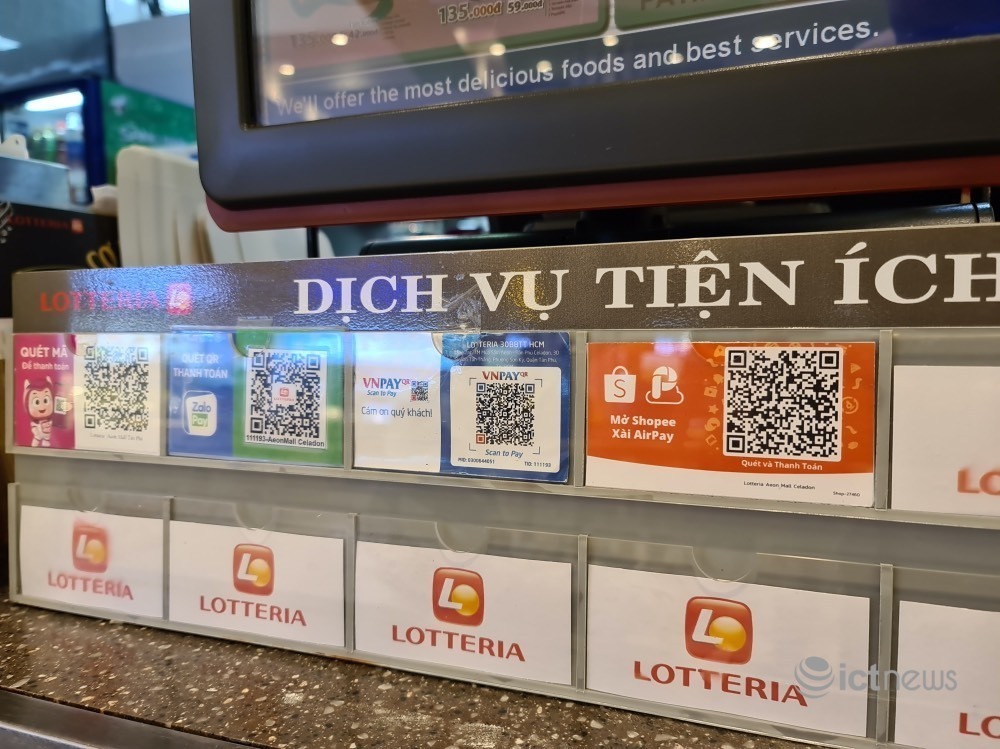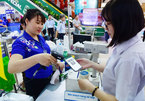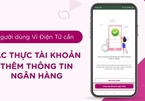Uyen, an office worker in HCMCity, has the habit of making payment with QR Code when going to a café.

She is a loyal client of Guta Café, The Coffee House and Trung Nguyen. She uses her smartphone to scan QR codes at the counter to make payment.
Uyen has installed two e-wallets on her phone to use alternatives in case the systems at the cafes have errors, or the cafes don’t accept some certain e-wallets.
Phi, 28, in district 1, only brings a smartphone when doing morning exercises. With the smartphone, he can go to convenience stores to buy goods or breakfast. 7-Eleven, Circle K, Family Mart, MiniStop and B’s Mart all allow payment with QR Code.
“It would be less troublesome to buy one bottle of water or a banana in the morning with the app. Cashiers won’t have to use small change, and you won’t have to bring cash with yourself,” he explained.
| Accepting payment with QR Code was first seen at cafes and convenience stores. Later, it was accepted at supermarkets, restaurants, fast food shops, traditional eateries and e-commerce sites as well. |
An officer of a Lotteria shop located at a shopping center in Tan Phu district said more and more clients are makeing payment with QR Code, especially young people. E-wallets run promotion programs, offering preferences to clients making payments with QR Code.
Accepting payment with QR Code was first seen at cafes and convenience stores. Later, it was accepted at supermarkets, restaurants, fast food shops, traditional eateries and e-commerce sites as well.
To make payment with QR Code, clients use e-wallets or bank apps to scan codes. All e-wallets and 18 bank apps available now have the QR Code payment function. The multi-service apps such as Shopee (in cooperation with AirPay) and Grab (in cooperation with Moca) also support this payment method.
A survey by Visa last May found that 84 percent of users feel secure when making payment via smartphones as their personal information is safe.
The increase in number of contactless payments via mobile phones, QR Code and e-commerce in 2019 compared with 2018 shows consumers’ high confidence level. At least 82 percent of surveyed consumers use contactless payment methods via smartphone at least once a week.
IDC’s White Paper released in April 2020 showed that payment via smartphone has surpassed payment with credit and debit cards in terms of popularity in Asia.
In 2019, Asian people spent $25 trillion via cards, but spent $51 trillion via mobile payment, which is leading digital payment methods.
Vietnam has a low number of POS at traditional stores, which makes payments via cards low. However, the country is witnessing a high growth rate in digital payment as more people have the habit of buying goods from e-commerce sites and more POS card swipe devices have been installed.
Because of limitations in POS machines, making payment with QR Code is a growing tendency. Shop owners just need to open a bank account with connection with e-wallet, and then display the QR Code at counters for clients to make payment. There is no need to equip with POS. QR Code is particularly suitable to small and medium points of sale.
Hai Dang

Southeast Asia, ‘fertile land’ for online payments, e-wallets
The obvious effects of the COVID-19 pandemic include the rapid increase in online payment services and digital banking across Southeast Asia.

E-wallet users rush to verify information
The number of e-wallet users completing identity verification surged ahead of the July 7 deadline, according to e-wallet firms.